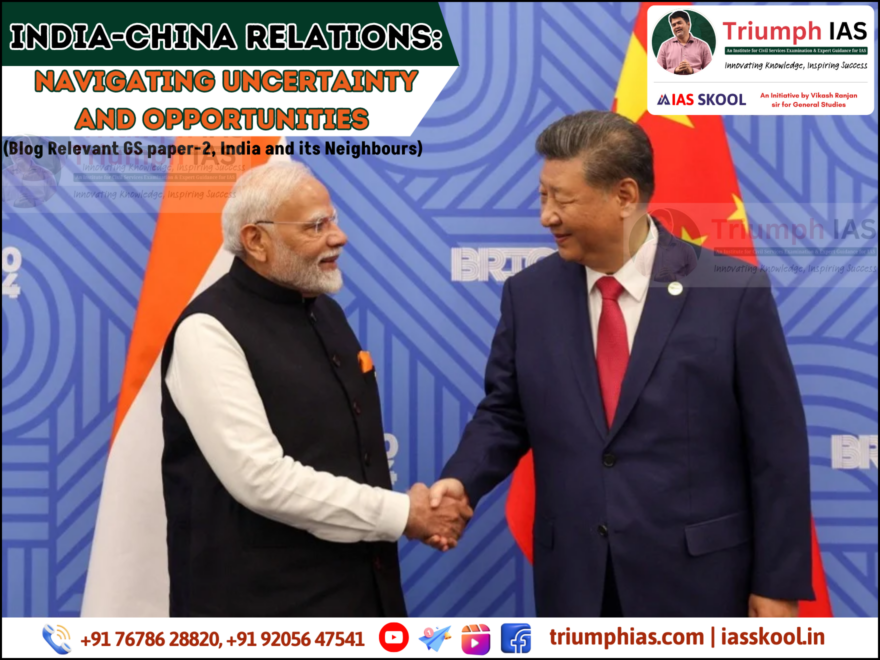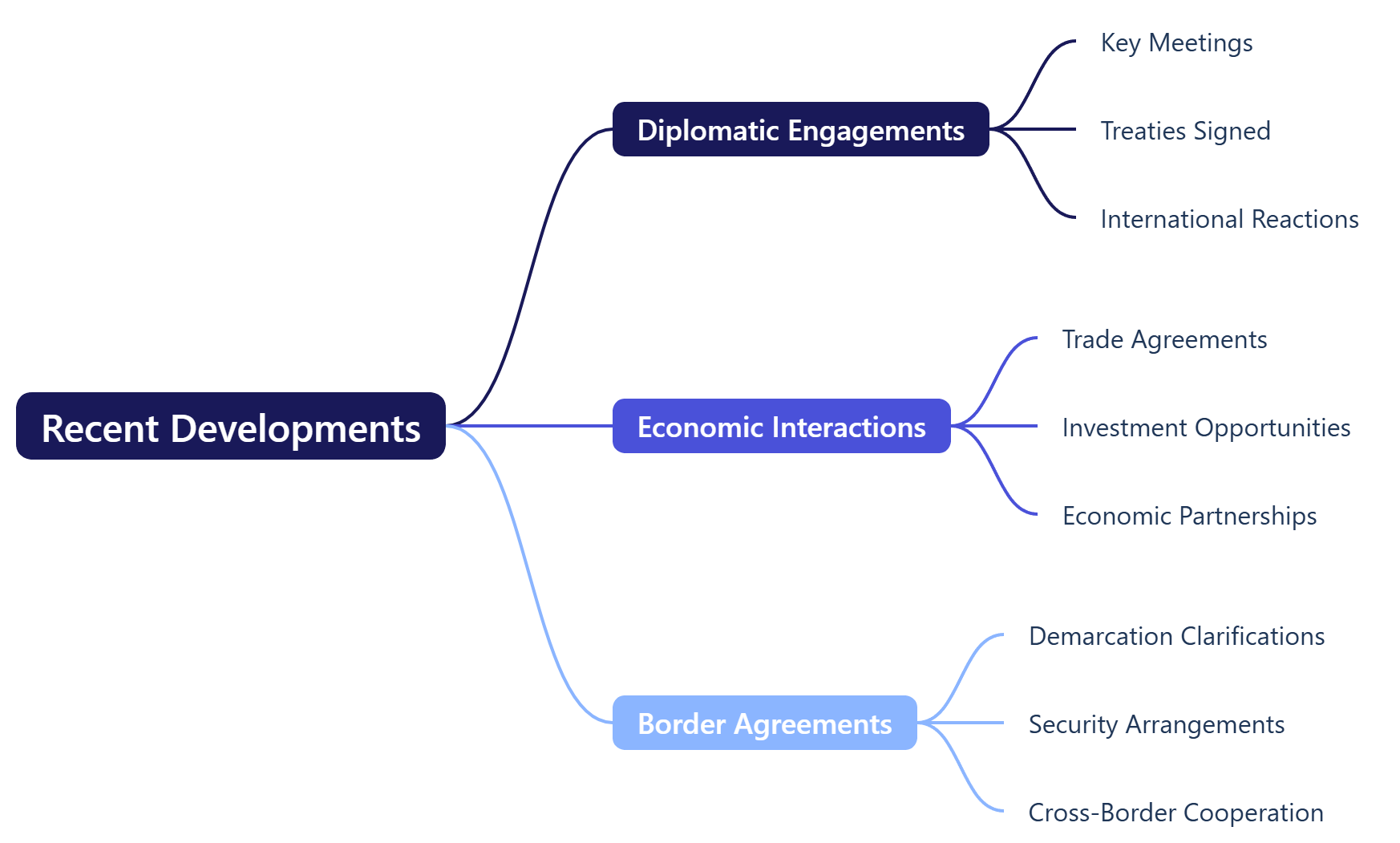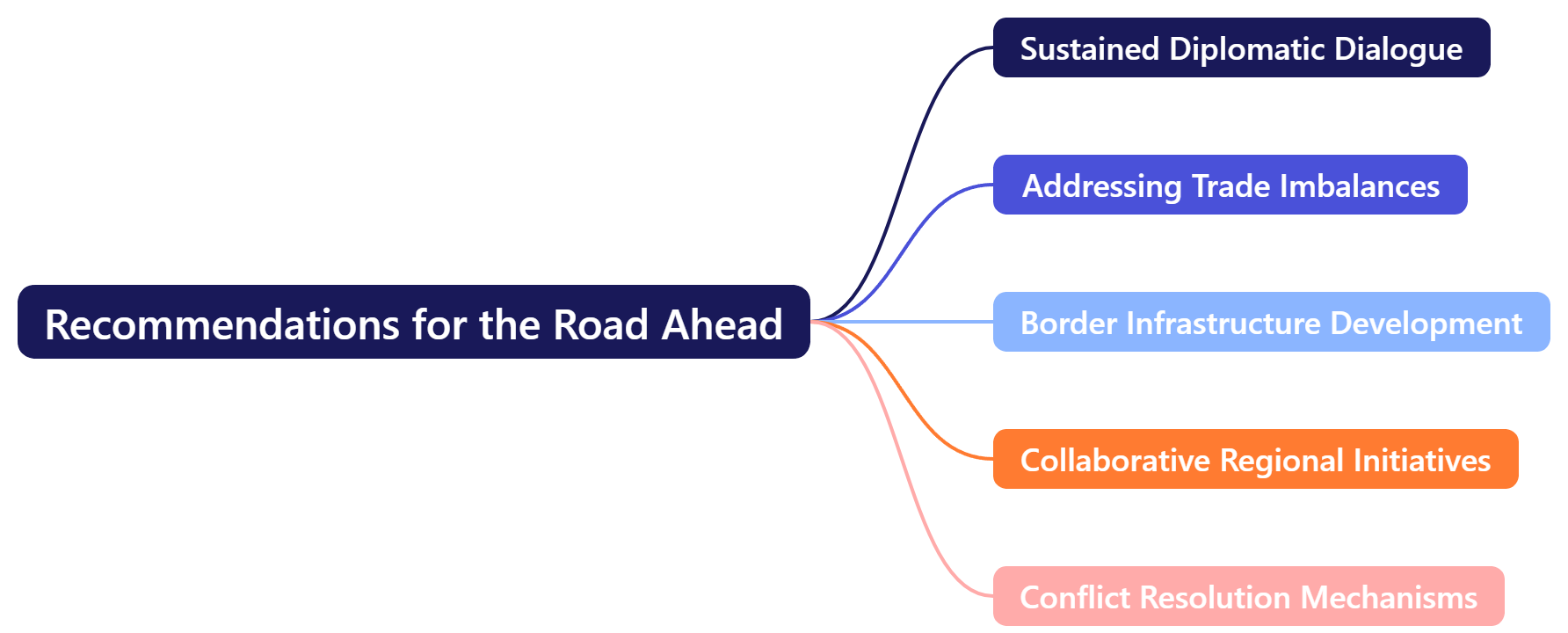India-China Relations: Navigating Uncertainty and Opportunities
(Relevant for GS paper-2, India and its Neighbours)
IntroductionThe relationship between India and China, two of Asia’s most influential nations, has been characterized by a complex mix of cooperation and contention. As they commemorate 75 years of diplomatic ties, their interactions span historical disputes, economic partnerships, and collaborative efforts on global issues. This article delves into the current state of India-China relations, highlighting recent developments, underlying challenges, and potential pathways for the future. Historical ContextIndia and China share a multifaceted history marked by periods of both camaraderie and conflict. The 1962 border war left a lasting impact, leading to ongoing territorial disputes, particularly along the Line of Actual Control (LAC). Despite these challenges, both nations have engaged in diplomatic dialogues aimed at fostering mutual understanding and cooperation. Recent Developments
In December 2024, the 23rd round of Special Representatives’ talks was held in Beijing, focusing on border management and the broader bilateral relationship. This meeting marked a significant step in rekindling dialogue after a hiatus caused by the 2020 border standoff. Subsequently, in March 2025, both countries conducted the 33rd meeting of the Working Mechanism for Consultation & Coordination on India-China Border Affairs (WMCC), emphasizing effective border management and the resumption of cross-border exchanges.
Despite political tensions, economic ties have remained robust. In the fiscal year 2024, bilateral trade reached $118.4 billion, with China’s exports to India at $101.7 billion and India’s exports to China at $16.67 billion. This trade dynamic underscores the deep economic interdependence between the two nations.
A pivotal development occurred in October 2024 when both countries agreed to resume joint military patrols along the disputed border areas of Depsang and Demchok. This accord aimed to restore pre-2020 patrolling rights and was seen as a tactical move to de-escalate tensions. Persistent Challenges
The LAC remains a contentious issue, with both nations asserting claims over various territories. The 2020 Galwan Valley clash, resulting in casualties on both sides, exemplified the volatility of the border situation. While recent agreements signal progress, the underlying disputes persist, necessitating continued diplomatic efforts.
The significant trade deficit in favor of China has been a longstanding concern for India. In fiscal year 2024, this deficit stood at $85.1 billion. India’s heavy reliance on Chinese imports, especially in sectors like electronics and pharmaceuticals, highlights the need for a more balanced trade relationship.
Both nations are vying for influence in the Indo-Pacific region, leading to strategic competition. China’s Belt and Road Initiative (BRI) and its growing presence in South Asia are viewed with apprehension in New Delhi. Conversely, India’s engagements with other regional powers and participation in initiatives like the Quad are perceived cautiously by Beijing. Opportunities for Collaboration
India and China are prominent members of international groupings such as BRICS and the Shanghai Cooperation Organization (SCO). These platforms offer avenues for collaboration on global issues, including climate change, counter-terrorism, and economic development.
Despite the trade imbalance, there is potential for synergistic economic partnerships. Joint ventures in technology, infrastructure, and renewable energy could benefit both nations. Encouraging Chinese investments in India’s manufacturing sector may also help address trade disparities.
Enhancing cultural ties and promoting tourism can foster mutual understanding. Initiatives like academic collaborations, student exchanges, and cultural festivals can bridge perceptions and build goodwill among the populace. Recommendations for the Road Ahead
Regular high-level engagements are crucial to address contentious issues and build trust. Establishing more communication channels can prevent misunderstandings and manage crises effectively.
India should focus on enhancing its manufacturing capabilities to reduce dependency on Chinese imports. Simultaneously, China can open its markets further to Indian goods and services, promoting a more equitable trade relationship.
Both nations should invest in developing infrastructure along the border areas to facilitate better patrolling and prevent inadvertent conflicts. Joint development projects can also be considered to promote cooperation.
Engaging in joint regional development projects can alleviate strategic tensions. For instance, collaborating on infrastructure projects in neighboring countries can be mutually beneficial and reduce competitive anxieties.
Establishing clear protocols and mechanisms for conflict resolution along the LAC can prevent escalations. Regular joint military exercises and confidence-building measures can also enhance mutual trust. ConclusionIndia-China relations stand at a pivotal juncture. While challenges persist, the avenues for cooperation are manifold. By focusing on mutual interests, addressing contentious issues through dialogue, and fostering people-to-people connections, both nations can pave the way for a more harmonious and productive relationship. The path ahead requires patience, pragmatism, and a commitment to peaceful coexistence. References
“India-China Relations: Crossroads & the Road Ahead,” Drishti IAS, April 2025. |






One comment